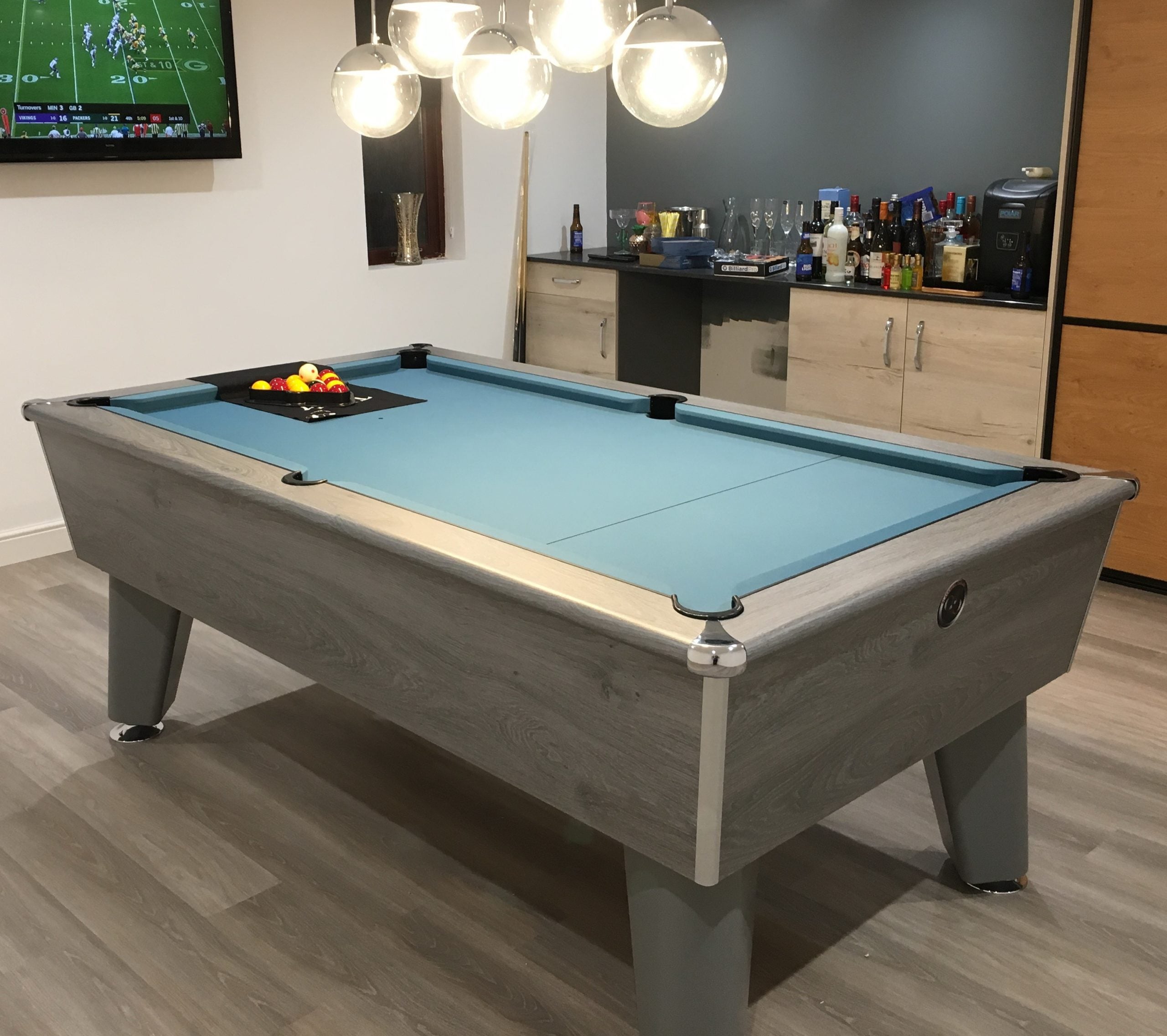Choosing the right pool table can significantly affect your playing experience. One of the most common questions when buying a pool table is: what’s the difference between MDF & slate bed pool tables This guide explores the key distinctions between the two types, focusing on material, performance, longevity, and suitability for different environments.
Introduction to Pool Table Types
Pool tables generally fall into two categories based on the material used for the playing surface: MDF (Medium-Density Fibreboard) and slate. These materials determine not only the table’s cost but also its performance, maintenance requirements, and ideal user.
Understanding the core features of MDF and slate bed tables can help buyers make informed decisions, especially when balancing budget and gameplay expectations.
MDF Bed Pool Tables
MDF stands for Medium-Density Fibreboard. It is an engineered wood product made by breaking down hardwood or softwood residuals into wood fibers and combining them with wax and resin binders under high temperature and pressure.
Characteristics of MDF Bed Tables
- Weight and Portability: MDF tables are lighter than slate bed tables. This makes them easier to move, which is advantageous for home users or spaces where portability matters.
- Cost-Effective: MDF tables are generally more affordable, making them a popular choice for casual players and beginners.
- Installation and Assembly: These tables are easier to assemble without professional help.
- Finish and Appearance: MDF tables often come in a variety of finishes. However, over time, they may warp if exposed to changes in humidity or moisture.
Limitations of MDF Tables
- Durability: MDF tables are less durable than slate. The surface may degrade with heavy use or improper storage.
- Gameplay Performance: The playing surface may not be completely flat, especially over time, which can affect ball movement and accuracy.
- Moisture Sensitivity: MDF is susceptible to warping or swelling when exposed to humidity, making it less ideal for garages or basements.

Slate Bed Pool Tables
Slate is a fine-grained rock that can be split into flat sheets. It has been used for decades as the preferred material for professional-grade pool tables.
Characteristics of Slate Bed Tables
- Superior Flatness: Slate offers a naturally level surface, which ensures accurate and consistent ball roll.
- Longevity: A well-maintained slate table can last for decades. It is highly resistant to warping and wear.
- Stability: Slate tables are heavy, which keeps them stable during play. This adds to the consistency and quality of gameplay.
- Professional Standard: Slate tables are the standard in tournament and professional settings.
Drawbacks of Slate Tables
- Cost: Slate tables are more expensive due to the material and labor required for construction and installation.
- Weight: A typical slate table weighs several hundred pounds. Moving or repositioning it requires professional handling.
- Installation Requirements: Professional installation is usually needed to ensure the surface is level and the table is securely assembled.
Choosing the Right Pool Table for Your Needs
The ideal pool table depends on how and where you intend to use it. Below are typical user scenarios:
Home Use and Beginners
If you're setting up a pool table in a small home or apartment for casual play, an MDF table is often sufficient. It is lightweight, easier to assemble, and generally less costly. However, you should avoid placing it in humid or damp environments to prevent warping.
Enthusiasts and Experienced Players
For more serious players who prioritize consistent ball roll and gameplay quality, slate is the better choice. While it comes with a higher initial investment, its durability and performance justify the cost over time. It’s ideal for game rooms, clubs, or spaces with permanent placement.
Commercial or Club Use
In environments where the pool table will be used frequently, such as bars or clubs, slate is the industry standard. It can withstand heavy use and offers the level playing surface expected in competitive games.
Common Myths About Pool Table Materials
Myth: MDF Tables Are Just as Good as Slate
While MDF tables offer a decent experience for beginners, they don’t match slate tables in terms of playing consistency and durability.
Myth: Slate Tables Are Only for Professionals
Slate tables are used in professional settings, but they’re also ideal for dedicated home players who want reliable gameplay. They can be enjoyed by players of all skill levels.
Myth: MDF Tables Are Maintenance-Free
Though lower maintenance than slate, MDF still requires care to avoid damage from humidity and improper handling.
Final Thoughts
So, what’s the difference between MDF & slate bed pool tables In short:
- MDF is cost-effective, lighter, and easier to move but less durable and precise.
- Slate is heavier, more expensive, and requires professional installation, but it offers a superior playing experience and long-term durability.
Your decision should depend on how often you plan to use the table, your playing expectations, available space, and budget. Understanding these differences can help ensure that the pool table you choose aligns with your needs and offers lasting enjoyment.





